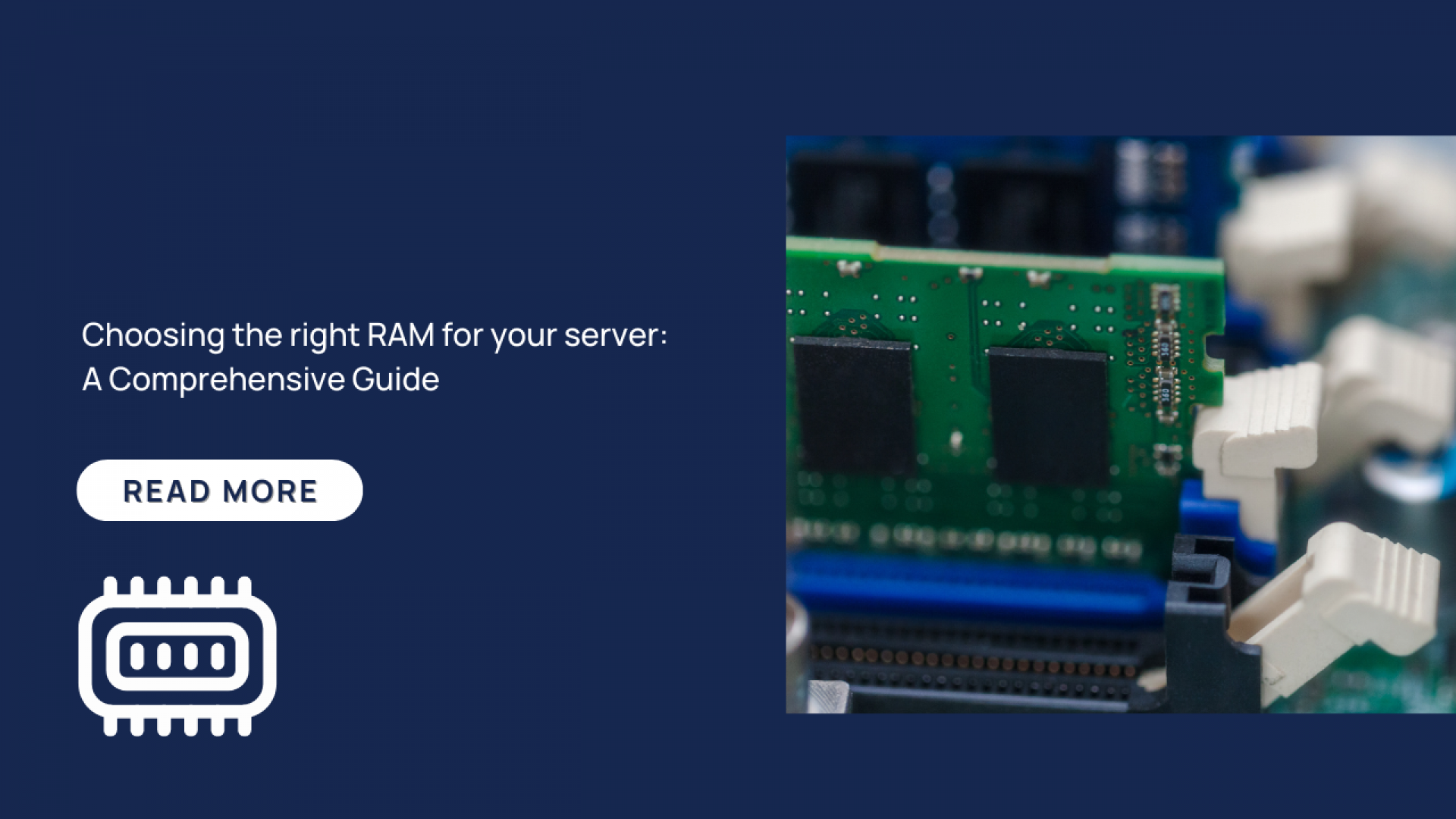
In the ever-evolving landscape of technology, servers play a crucial role in powering applications, websites, and services. One of the key components that significantly influences a server's performance is its Random Access Memory (RAM). Choosing the right RAM for your server is a critical decision that can impact its speed, efficiency, and overall capability. In this comprehensive guide, we will explore the importance of RAM in a server, factors to consider when selecting RAM, and tips for optimizing server performance. Comprint is your one stop destination to cater to all your Memory needs.
Importance of RAM in a Server:
Random Access Memory (RAM) is the temporary storage area where the server stores data that is actively being used or processed. Unlike storage devices such as hard drives or SSDs, RAM provides fast and volatile access to data, allowing the server to quickly retrieve and manipulate information. The amount and type of RAM in a server directly impact its ability to handle concurrent processes, multitasking, and overall responsiveness.
Related: In servers RAM and processor work hand in hand leading to optimal efficiency. If you would like to know more about processor technology on servers check out the blog on The Future Landscape of Server Processor Technology.
Capacity:
The first and foremost consideration when choosing RAM for a server is its capacity. The server's workload and the nature of applications running on it will determine the required amount of RAM. Insufficient RAM can lead to performance bottlenecks, slower response times, and even system crashes, particularly during peak usage periods. It's advisable to analyze the server's usage patterns and choose a RAM capacity that accommodates current needs while allowing for future scalability.
Type of RAM:
There are various types of RAM available in the market, such as DDR3, DDR4, and DDR5. The type of RAM is crucial as it determines the speed and efficiency of data transfer. Newer generations of RAM, like DDR4 and DDR5, offer higher data transfer rates and improved energy efficiency compared to their predecessors. However, compatibility with the server's motherboard is essential, so it's crucial to check the specifications and ensure that the chosen RAM type is supported.
ECC vs. Non-ECC:
Error-Correcting Code (ECC) RAM includes additional bits of data that allow the server to detect and correct errors in real-time. While ECC RAM provides a higher level of reliability and is recommended for mission-critical applications, it comes at a higher cost. Non-ECC RAM, on the other hand, is more budget-friendly but lacks the error-detection and correction capabilities. The choice between ECC and Non-ECC RAM depends on the server's intended use and the importance of data integrity.
Memory Channels:
Modern servers often support multiple memory channels, allowing for parallel data access and increased bandwidth. Dual-channel, quad-channel, and even hexa-channel configurations are common. Choosing the right memory channel configuration depends on the server's architecture and the capabilities of the motherboard. Matching the memory channel configuration with the server's capabilities ensures optimal performance and efficient data handling.
Frequency:
RAM frequency, measured in MHz, represents the speed at which data can be transferred to and from the RAM module. Higher frequencies generally result in better performance, but the impact may vary based on the specific workload. It's essential to consider the server's architecture and applications to determine the ideal balance between RAM capacity and frequency.
Registered vs. Unbuffered:
Registered (or buffered) RAM includes an additional register between the RAM modules and the memory controller, providing stability and reliability in high-density configurations. Unbuffered RAM, on the other hand, is simpler and more cost-effective but may be limited in terms of maximum capacity. The choice between registered and unbuffered RAM depends on the server's requirements and the need for scalability.
Virtual Memory:
Configuring virtual memory settings on the server is crucial for efficient RAM utilization. Virtual memory allows the server to use part of the storage device as additional RAM when the physical memory is exhausted. However, relying too heavily on virtual memory can lead to performance degradation. Balancing virtual memory settings with physical RAM capacity is essential for optimal server performance.
Memory Balancing:
In multi-server environments, distributing the workload evenly across servers can prevent individual servers from becoming bottlenecks. Load balancing algorithms can help allocate resources effectively, ensuring that no single server bears an excessive burden. Memory balancing tools and techniques can be employed to distribute memory usage efficiently, improving overall system stability and responsiveness.
Regular Monitoring and Maintenance:
Monitoring server performance is an ongoing process that involves tracking RAM usage, identifying potential bottlenecks, and addressing issues promptly. Implementing a robust monitoring system allows administrators to detect anomalies, predict potential failures, and optimize resource allocation. Regular maintenance tasks, such as updating firmware, drivers, and operating systems, contribute to a stable and reliable server environment.
Conclusion:
Choosing the right RAM for your server is a pivotal decision that requires careful consideration of various factors. The capacity, type, and configuration of RAM directly impact a server's performance, responsiveness, and reliability. By understanding the server's workload, future scalability needs, and the nuances of different RAM options, you can make informed decisions that align with your specific requirements.
Additionally, optimizing server performance involves not only selecting the right hardware but also implementing effective software configurations and maintenance practices. Regular monitoring, load balancing, and virtual memory management contribute to a well-rounded approach to server optimization.
In the dynamic world of technology, staying informed about the latest advancements in RAM technology and server optimization techniques ensures that your server infrastructure remains resilient and capable of meeting the demands of today and tomorrow.

Leave a Comment